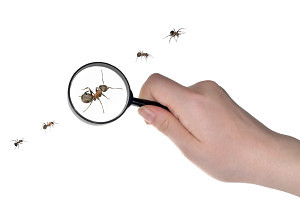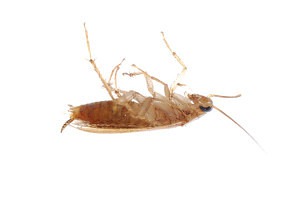Do-it-yourself pest control
In my line of work, I have had numerous conversations with people, both friends and customers, who ask me about tips for Do-It-Yourself Pest Control. A quick Google search will reveal thousands of product ads, articles, and videos that provide “Tips” and “Solutions” for all your Pest Control needs. While some of these products are effective in dealing with pest problems, many of them do not work nearly as well as professional grade products. Also, professional expertise in the application of such products is often needed for positive results. In an effort to clear up a lot of confusion, I am here to provide a few tips for your Do-It-Yourself Pest Control needs.
Before I begin, I want to remind everyone that dealing with a problem without professional expertise often is problematic. I learned that lesson myself when I attempted to “DIY” my home electrical system to save money. After the electrical burns healed, I decided that it was a job better left to someone more qualified than me.
Pest control is similar, and as a result these tips will not always protect you from pest problems. They will, however, significantly lower your chances of an infestation and save you money.
The easiest way to deal with pest infestations is to make sure they do not become a problem in the first place. Start by keeping food well sealed, doors and windows closed, cleaning out attics, and repairing any holes in your home. Pests often enter homes either through open doors and windows or through any structural openings, therefore dealing with those problems lowers your chances of having any infestations.
It is also important to limit any potential habitats and food sources for insects and pests, and this will lower the chances of infestations.
If you begin to suspect that you do have an infestation in your home or any structure, it is important to find out what type of insect or pest is the culprit. This can sometimes be difficult for those without professional training, but a good start is discovering what area the infestation is centered around. If you find any droppings in the house, you can discover the type of animal that left it behind fairly easily.
With insects, however, identification becomes more difficult. Many species of insects leave behind similar markings and different subspecies can look almost identical to the untrained eye. While online research can sometimes assist you in the identification, it is by no means a perfected method. Some insects and pests also do structural damage that is impossible to see without getting inside of walls and difficult to reach areas, and as a result can go unnoticed for years without regular inspections.
Infestations vary in the methodology for treating them. Some problems can be dealt with using only one pesticide or a type of trap, but others are more tricky. Certain types of insects, such as bedbugs, are impossible to deal with without professional expertise and products, and many times DIY products do not completely remove an infestation from a home.
Certain products will only damage the infesting insect or pest, leaving it to come back at a later time. Some products are even worse, and can scatter infestations rather than destroying them. This causes the pests to spread out and actually creates a bigger problem.
Certain pests, such as bats, are protected and only those licensed by the Department of Natural Resources are legally able to interact with and control infestations. As a result, only professionals can deal with those types of infestations in your home.
Dealing with pest problems without professional help can sometimes come with risks. Bees, wasps, scorpions, and rats are just a few potentially hazardous creatures you might interact with. Some infestations can be dangerous to try to remove, and homeowners risk potential injury from attempting to do so, especially those with allergies.
Disease and bacteria can often be rampant in infestations, so it is important to wear appropriate safety equipment and disinfect any areas where infestations have occurred. In more severe infestations, it can sometimes not be financially practical for homeowners to deal with the problem themselves.
Often the required products, safety gear, disinfecting chemicals, and the time spent dealing the with problem are greater than the cost of a professional solution. As a result, homeowners should do research to find out about the comparative costs of a DIY solution versus a professional service.
In conclusion, like plumbing and electrical work, pest control can be a challenge without professional expertise, and just like you don’t want to flood your house or be electrocuted, you don’t want a severe infestation to go unchecked inside of your home. While DIY products do have some degree of effectiveness, your best bet is to prevent the infestation from occurring in the first place through exclusion and sanitation measures.
If you live in or near Cherokee County or any neighboring Georgia counties, and you feel out of your depth with your pest problems, remember that Canton Termite and Pest Control offers FREE Inspections and FREE Estimates.
We will help you identify your problem and help you solve it QUICKLY and SAFELY!
Call us today at 770-479-1598 to schedule your appointment.
By Tim

